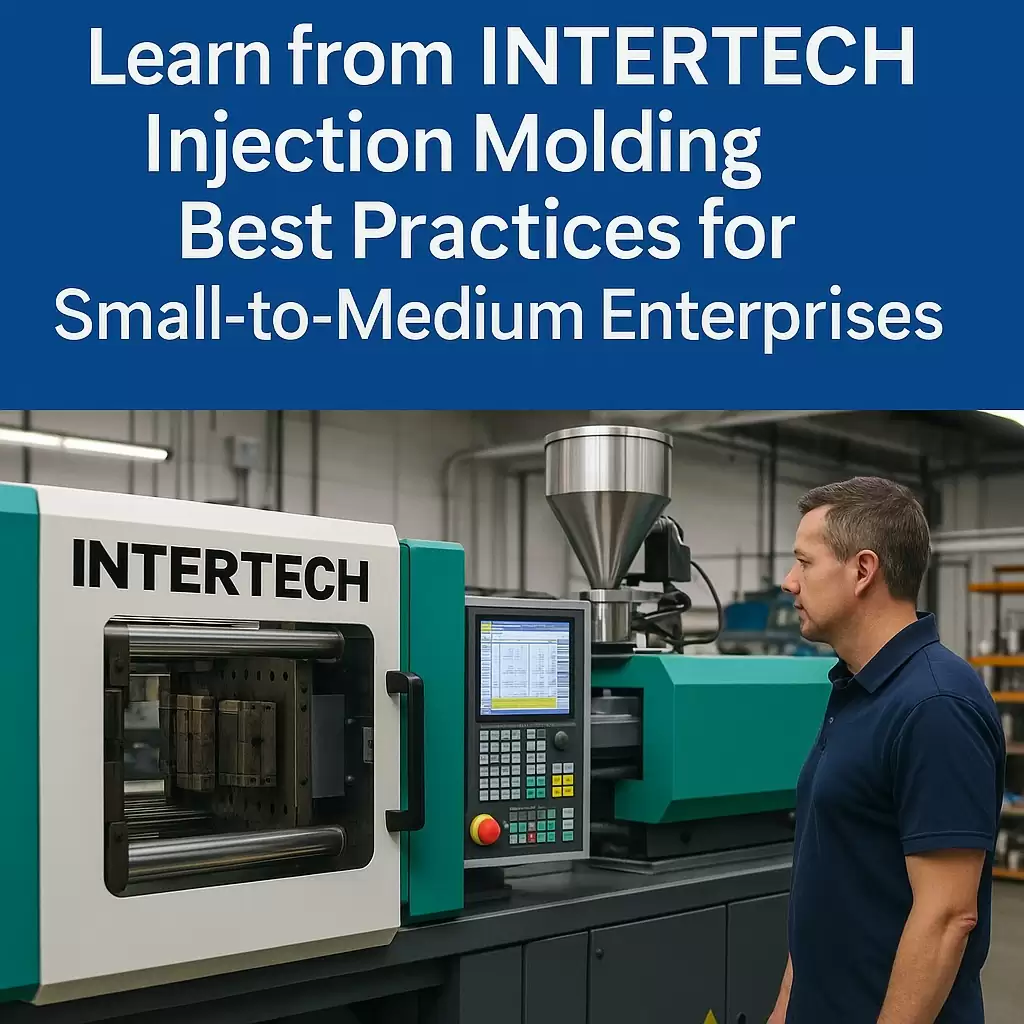INTERTECH Injection-Molding Best Practices Every Small-to-Medium Enterprise Can Adopt
INTERTECH Injection-Molding Best Practices Every Small-to-Medium Enterprise Can Adopt
INTERTECH Machinery Inc. is best known for building rugged, servo-driven presses used by Tier-1 automotive, medical-device, and consumer-electronics suppliers. Yet many of the production habits perfected on INTERTECH workcells translate directly to small-to-medium enterprises (SMEs) that need to squeeze more throughput, quality, and margin from limited floor space and budgets. Below are seven proven practices—tested daily inside TaiwanMoldMaker.com partner plants—that any SME can implement, even if you run only a handful of presses.
1 Lock the Process Window on Day One with Scientific Molding
-
What INTERTECH does
Cavity-pressure and mold-temperature sensors are standard on new builds. Operators capture 8–12 shots during T-0, map the “golden” V/P transfer and hold pressure, then save the recipe in the PLC. -
Why SMEs should copy it
• Fewer start-up scrap parts.
• Operators can move between presses without tribal knowledge.
• CpK ≥ 1.67 is achieved in the first shift, not the first week.
Quick win: Rent a portable cavity-pressure sensor kit and validate one high-runner tool; expand to other molds once management sees scrap fall.
2 Use Servo Energy Profiles to Spotlight Hidden Downtime
INTERTECH’s OPC UA gateway streams kWh, screw rpm, and clamp force every 1 s. A simple Pareto chart of “energy spikes” uncovered a sticky hot-runner nozzle that cost 3 % cycle-time loss on a 350-ton cell—long before QC saw weight drift.
Action for SMEs:
Install an inline power meter (< US $150) on each press and review daily kWh/kg resin. A sudden rise usually flags mechanical drag, poor dryer settings, or inconsistent shot size.
3 Standardize Mold Bases & Quick-Change Inserts
Large INTERTECH users stock DME/HASCO base plates, then swap cavity inserts or slide cores as SKUs evolve. Tooling changeovers drop from 8 h to 90 min and bridge-tool costs shrink by 30–40 %.
SME adaptation:
Order new tools with identical clamp-slot spacing and water-line quick connectors. Future insert changes cost a few thousand dollars, not tens of thousands.
4 Schedule “Micro-PM” During Color Changes
Instead of waiting for quarterly preventive maintenance, INTERTECH technicians pull and clean check-rings, nozzle tips, and filters every time a press purges for a major color or resin shift—usually a 20-minute window that would otherwise be idle.
Try this:
Build a 10-point micro-PM checklist laminated at each press. Small maintenance tasks piggy-backed on natural downtime can extend screw life by 20 % and cut unexpected breakdowns in half.
5 Adopt Modular End-of-Arm Tooling (EOAT)
INTERTECH workcells use magnetic quick-plates and standardized vacuum cups so a six-axis robot can swap grippers in < 60 s. SMEs can replicate the concept with low-cost, 3-D-printed EOAT brackets and pogo-pin sensor connectors.
Result:
One robot services two to three machines running different parts, saving labor and floor space.
6 Treat Mold-Flow Simulation as a Quoting Tool—Not an Afterthought
INTERTECH sales engineers won’t finalize a quote without a gate/warp simulation. The practice:
-
Confirms clamp tonnage and injection unit size.
-
Predicts sink or knit lines early enough to tweak part design.
-
Generates a cooling-time estimate that feeds ROI and OEE models.
SME shortcut:
Use cloud-based Moldflow® Advisor (hourly license) or the free Autodesk Fusion 360 Simulation to run a quick fill analysis before you accept any RFQ.
7 Tie ESG Metrics to Every Production Report
Major INTERTECH customers demand energy (kWh/kg) and scrap (kg/10 k shots) data on the same dashboard as dimensional CpK. SMEs that adopt the same habit find it easier to win big-brand business and negotiate better power tariffs.
Starter step:
Add two columns—energy and scrap—to your daily production log; review trends every Friday with the shop team.
How TaiwanMoldMaker.com Helps SMEs Implement These Practices
| Challenge | Turn-Key Support |
|---|---|
| No sensors or MES? | Rent or purchase sensor kits with plug-and-play dashboards. |
| Need insert-ready tools fast? | 48-Hour DFM Pack plus aluminum bridge tooling in ≤ 15 days. |
| Limited robot budget? | Shared-robot workcells with interchangeable EOAT for 2–3 presses. |
| Lack simulation expertise? | Complimentary Moldflow® reports with every quote. |
Take the First Step
-
Upload one of your “problem” CAD files to TaiwanMoldMaker.com.
-
Request a free INTERTECH-style DFM audit—you’ll get gate advice, sensor placement, and energy benchmarks within 48 hours.
-
Pilot one best practice (scientific molding, quick-change inserts, or micro-PM) on your shop floor next week.
Big-company discipline isn’t reserved for big budgets. By copying INTERTECH’s proven playbook—and leaning on TaiwanMoldMaker.com for tooling, sensors, and training—SMEs can hit enterprise-level quality and efficiency without enterprise-level cost.









